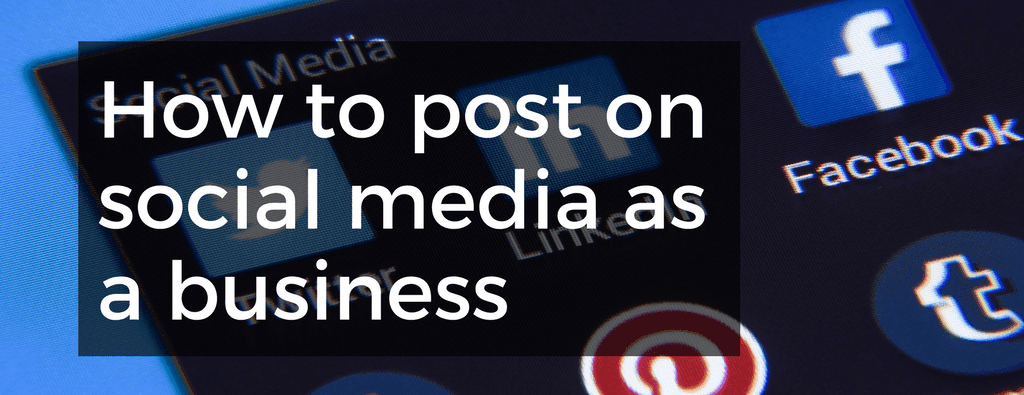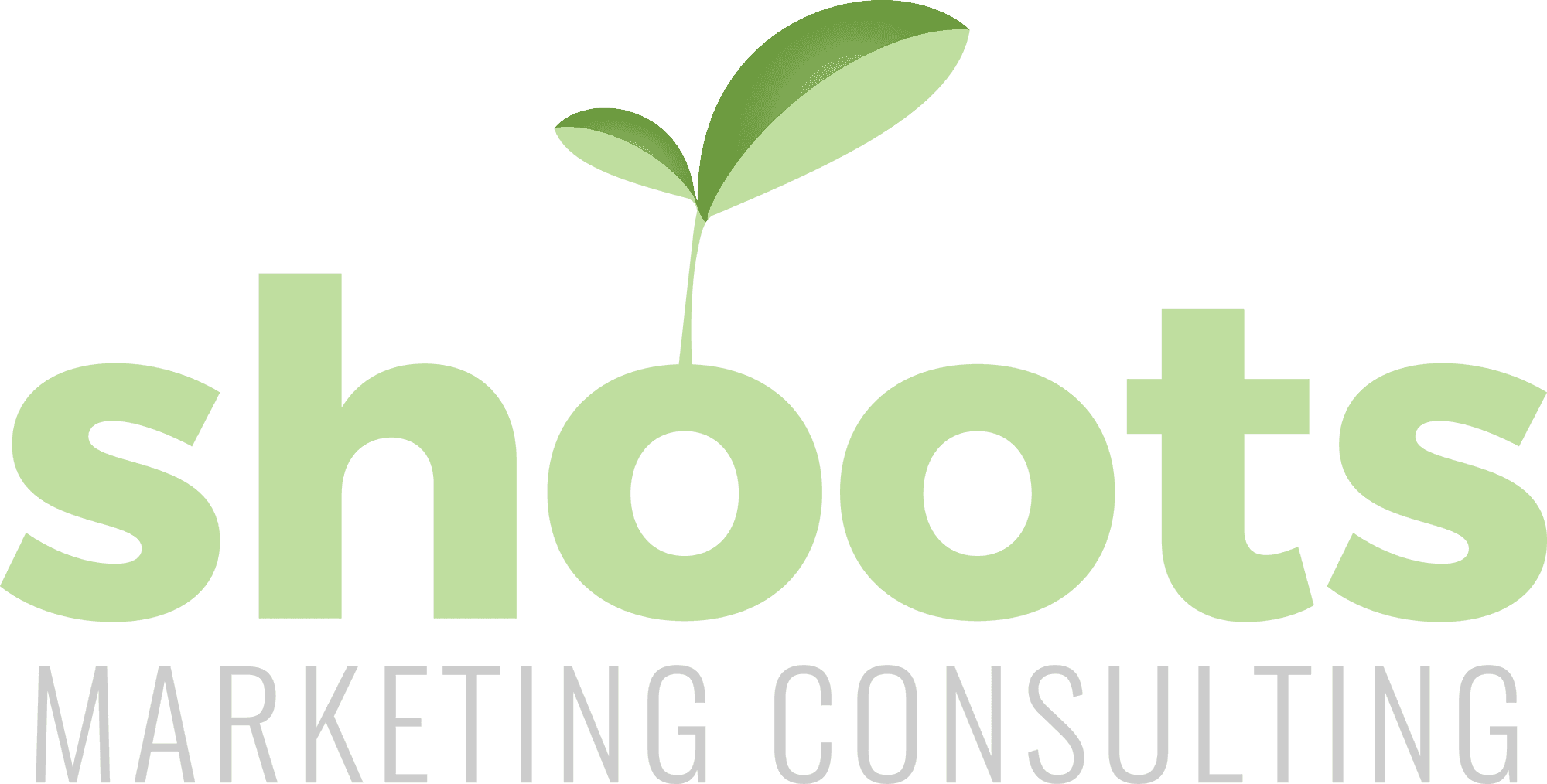Why do SMEs need digital marketing?
- by Julia Williams
- •
- 04 May, 2017
- •
Digital marketing can be daunting and time consuming. Do businesses actually need it?

Have you been wondering “Why is everyone saying we should use digital marketing? Does my business actually need it?”?
Maybe your sales are ticking along, you get most of your business through word of mouth, and you feel like digital marketing would be a big time commitment that you can’t justify given you’re so busy?
Maybe you are using Facebook socially, but using it for the business seems a bit daunting?
Let’s just clarify what digital marketing is. It is actually an umbrella term of marketing products and services such as search engine optimisation (SEO), search engine marketing (SEM), content marketing, e-commerce, social media, e-newsletters, e-books and online display ads.
If you have a company website, it is important to be able to use this as a “business card” for potential customers and an information channel for existing customers.
However, you also want to be able to be found in search engines when someone is looking for a product or service like yours. This is where you may need to invest some time and/or money in search engine optimisation (SEO).
As it is very hard to get to the top of Google with search engine optimisation alone, especially in competitive industries, you could try if search engine marketing (SEM) provides you with better results. This of course does not come for free either, therefore you will want to make sure that you are measuring the results of your ads and having a process in place to convert leads you are getting into sales.
This sounds a bit daunting, right? But don’t despair, there is another way of being visible on the internet too and it is incredibly powerful: social media.
Facebook is being actively used by 66% of Australians. 1 in 2 Australians use YouTube and 1 in 2 businesses are on LinkedIn. In other words: the audience is massive!
Smart phones have overtaken any other device in terms of popularity and make social media accessible anywhere at all times. People spend and average of 12.5 hours a week on Facebook alone, checking in several times a day. This should demonstrate the power of this medium.
It is absolutely free to join Facebook, as you probably know, and it is also absolutely free to create a company page. And even better: Facebook ads are more affordable than Google ads and tend to be effective. 58% of SMEs and 98% of large businesses that have advertised on Facebook believe it has been effective. That sounds more promising, right?
Now, that’s where the so-called “content marketing” becomes important. “Content” is the heart of all your digital marketing activities. Google loves content and so does social media.
The key is to consistently generate content on your website and social media platforms that is relevant to your target customers. Therefore you will need to dedicate some time to thinking of topics that might be interesting, like pain points that your potential customers are dealing with, industry trends, changes that affect your industry, etc.
To distribute your message, you can write a blog on your website (like this one), post a link or photo on social media platforms, create an e-book and use this as “bait” to come to your website and sign up to your e-newsletter, you can create a “live” video, properly produced videos, podcasts, etc.
Whatever you write or create, you want to make sure that you offer advice or a solution for the problem you have made your audience aware of and link the post back to your website or include a call-to-action such as: “If you need help with (…), please call us on (…).”
And ideally, you also get potential prospects to sign up to your e-newsletter and keep them informed about new products, services, events, offers and whatever else you might want to tell them. A big e-newsletter database is a very powerful tool to get your message to your audience quickly and also to build trust, as they will hear from you regularly.
To sum it up: Digital marketing can be daunting, but is very effective at reaching your target customers due to the high penetration of social media into our business and social lives. Small, medium and large businesses are successfully generating leads by generating content on digital marketing platforms and are convinced that it works.
Your competitors are out there, advertising, generating content, building online relationships with potential customers and are converting leads into sales. It is working for at least the majority of companies. It would probably work for yours too.
Please let me know in the comments section below if you agree or disagree.
If you are interested in a conversation about digital marketing support for your business, please don’t hesitate to contact Shoots Marketing Consulting on Julia@shootsmarketing.com.au or 0447 235 000.

You might be considering trying out social media for your business or you have dabbeled in it, but don’t really know what to post and how? Here is my guide to successful social media posting as a business :
Firstly, why should you be on social media as a business? Well, you might be missing out on an effective way to reach your target audience and build relationships with them. Facebook now has almost 2 billion active users per month globally. More locally, 16 million Australians are now using Facebook on a monthly basis and we’re spending 12.5 hours per week on Facebook alone. That is a lot of users and a lot of time spent on this medium. Why not at least try to engage with potential customers this way?
But before you get ready to post, ask yourself, what your goals are: What do you want to achieve? Is it brand awareness, relationship building, lead capturing, event advertising, a combination of them all? It might make a big difference whether you are looking to build relationships or trying to capture leads as quickly as possible.
Who is your target audience and how can you find them on Facebook? Are they among your family and friends? Are they in certain groups (be careful not to appear to be too “sales-y” in groups, especially if you have just joined them)? Can you reach them via Facebook advertising?
Define your brand personality : do you want to appear friendly, approachable, professional, corporate, as an expert, a mate, … Write in the appropriate tone for your brand personality. Good examples of brand personality would be Origin Energy or Ubank who speak their customers language and therefore appear more approachable: “You’ll …”, “We’ve…”.
Facebook is making it harder to get reach without advertising. Facebook algorithms are limiting your Facebook posts’ visibility – especially if they are too “sales-y”. Try to provide relevant content to get more reach and not be filtered out of the newsfeed.
But what can you write about? Think of potential “ pain points ” your target group(s) might have and show them how you can solve a problem for them. E.g. you are a physio and your potential customers might have a back problem. Share news articles, your own blog posts or videos about how regular exercise can help with strengthening your core muscles and alleviate back pain. Of course include a link to your website so that they can get in touch or read more on your blog. This way you’re adding value, establishing yourself as an expert, and are building and nurturing relationships. Don’t just sell your product or services too obviously unless you have a product launch, promotion or special offer and it might make sense to do so. When people are using social media, they are there to communicate and enjoy interesting social content, not primarily to shop. It’s a bit like going to your mate’s party and only talking about your work and your new product. People will get bored of it pretty quickly and not want to be sold to in a social environment.
Try to engage your audience in a conversation by asking questions like “We absolutely love green this season! What is your hot new colour?” (Sorry, I couldn’t think of a better example…)
Content is king in social media. The more interesting content you can produce and share, the better. This could be anything like a blog post, recipe, interesting fact, photos, podcasts, videos, live videos (the new thing!), etc.
Don’t try to do everything at once. You will quickly get overwhelmed and social media becomes a full-time job. Start with whatever you feel comfortable with, get some experience and then try out anything else that seems interesting. However, be aware that Facebook currently favours videos in the newsfeeds including or particularly live videos, which is their baby.
But what happens if you have a promotion or specific offer you would like to share with potential customers? You could try out Facebook advertising as you can target your ads so that they are shown to the kind of people who might actually turn into customers (e.g. kids clothing ads to mothers of young children, wedding expo ads to people who have recently got engaged, etc.).
Don’t “boost” your posts as this is not targeted and may not reach the right kind of people.
Make sure to use a specific offer rather than just generally advertising your services; this increases the conversion rate significantly.
Whenever appropriate, drive traffic to your website by including links to your website. Keep in mind that the more clicks they have to make, the more people you lose, so the link has to lead to the right page.
Remember to keep it
clean
, be appropriate and in line with your brand personality. When you get
negative comments – unless they are inappropriate, trolling, or discriminating
–try not to just delete them, but try to be polite and deal with them in a
positive manner or just ignore them if there is no point getting into an
argument with the person, as it this could make it worse.
A great saying to think of is “Don’t argue with an idiot. They will drag you
down to their level and beat you with experience.”
And last, but not least, give it a go . You can’t just post once and expect this to make a big difference to your business. Try to commit to posting at least once a week, if not daily and stick with it for a couple of months as a minimum in order to see whether it might work for your business. You will gain more experience along the way, become more confident regarding what to post, find out what people like, learn about your customers, develop ads that work, etc. If you give up after a week, of course you won’t see a difference in your sales. Rome wasn’t built in a day, neither are the “overnight” social media success stories you hear about.
And now, over to you: Go and socialise!
Please share your experiences with social media as a business in the comments below.
If you are interested in a conversation about marketing support for your business, please don’t hesitate to contact Shoots Marketing Consulting on Julia@shootsmarketing.com.au or 0447 235 000 .

So off you go, you put together a website, brochure or flyer describing your great product or service. You go live, distribute the materials, but you don’t get much of a response? What’s going wrong?
Too often in my corporate and consulting career, I have noticed that a simple thing called “call to action” gets forgotten about. It seems so obvious to the business owner or product managers what great features their product has and why people should buy it, but they forget to spell out to the customer what to do next. This is a real shame as it is giving away an opportunity to convert customer interest into sales.
It is relatively easy to fix this, but you have to remember to do this whenever you are creating marketing materials and content. The secret it: Put yourself into the customer’s shoes. What is it you want them to do? Is this obvious to the customer?
Do you want them to contact you? Do you want them to sign up to your e-newsletter? Do you want them to buy a product? Whatever it is, make sure you are saying clearly what the customer should do next.
Here are a few tips for creating a strong “call to action”:
- Spell it out!
Say what it is you want the customer to do next.
- Make sure the “call to action” is easily visible
on the marketing material and no effort is required to find your contact details.
- Use the “KISS” rule
(“Keep it short and simple!”)
- Use quirky wording
to get the customer’s attention such as “Try it, you’ll love it!”.
- Create a sense of urgency
(“Sign up for free now!”).
- Create “call to action” buttons
on your website such as “Start your free trial!”, “Contact us!” or “Get a free quote!”.
- Use bold font and bright colours
to attract attention if it fits your style.
- Mention the “call to action” in as many places as it seems appropriate. You have to give your potential clients several opportunities
to act along the journey through your marketing materials. They might use one of them.
Another good example is social media posts . Often, small and also bigger companies post truly interesting content on their social media accounts – after all, that’s what you are meant to do on social media, right? So they post news about their company, information about new products or industry news, but they forget to create a link to their own website, thereby missing the opportunity to let potential customers find out more about their products and possibly even buy them.
You could even simply include your business phone number in the post, if you want to be called about a product or service and say “We’d love to talk to you about how (our solution) can help you with (customer problem). Please call us on (insert phone number)!”.
Don’t give away opportunities to convert customer interest into sales anymore. Remember to put yourself into your customer’s shoes and literally tell them what to do next . I am sure you will find that this easy fix will make a difference to your sales.
I hope you found this blog post helpful and would be glad to hear about your experience with making tweaks to wording on your marketing materials and what impact this has had. Leave a comment below or email me at julia@shootsmarketing.com.au ! (Of course I had to include a call to action to prove my point.)









